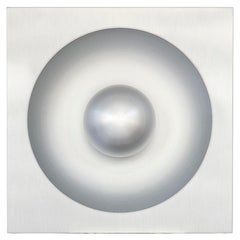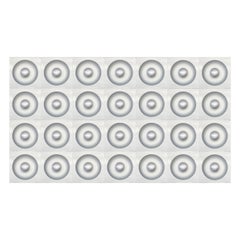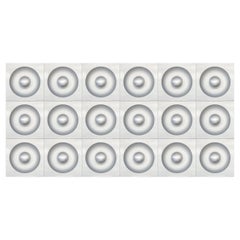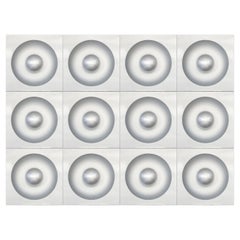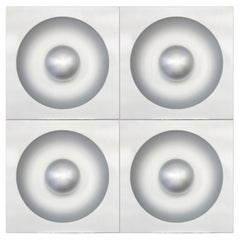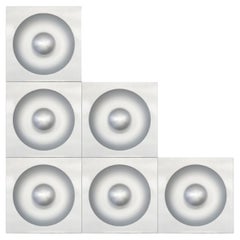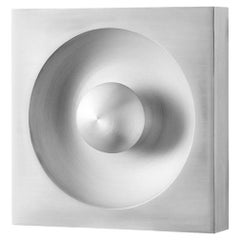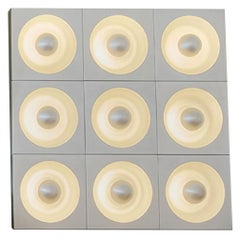Panton Spiegel Lamp
21st Century and Contemporary Danish Mid-Century Modern Wall Lights and ...
Aluminum
21st Century and Contemporary Danish Mid-Century Modern Wall Lights and ...
Aluminum
21st Century and Contemporary Danish Mid-Century Modern Wall Lights and ...
Aluminum
21st Century and Contemporary Danish Mid-Century Modern Wall Lights and ...
Aluminum
21st Century and Contemporary Danish Mid-Century Modern Wall Lights and ...
Aluminum
21st Century and Contemporary Danish Mid-Century Modern Wall Lights and ...
Aluminum
21st Century and Contemporary Danish Mid-Century Modern Wall Lights and ...
Aluminum
Recent Sales
Vintage 1960s Danish Mid-Century Modern Wall Lights and Sconces
Steel
21st Century and Contemporary Danish Mid-Century Modern Wall Lights and ...
Aluminum
Vintage 1970s Danish Wall Lights and Sconces
Aluminum
People Also Browsed
21st Century and Contemporary Contemporary Abstract Sculptures
Wood, Lights, LED Light, Mixed Media, Acrylic, Neon Light
2010s British Mid-Century Modern Daybeds
Bouclé, Oak
21st Century and Contemporary Brazilian Modern Armchairs
Bouclé
2010s South African Minimalist Pedestals
Hardwood
21st Century and Contemporary Italian Modern Chandeliers and Pendants
Steel, Aluminum
21st Century and Contemporary Italian Art Deco Wall Lights and Sconces
Brass
21st Century and Contemporary Swedish Mid-Century Modern Table Lamps
Textile
2010s South African Minimalist Night Stands
Poplar, Burl
2010s Mexican Brutalist Contemporary Art
Wood
21st Century and Contemporary Swedish Scandinavian Modern Wall Lights an...
Metal
2010s Italian Modern Chaise Longues
Leather, Wood
21st Century and Contemporary Italian Modern Coffee and Cocktail Tables
Blown Glass
2010s American Modern Stools
Wood, Oak
Mid-20th Century Danish Mid-Century Modern Planters and Jardinieres
Metal
Vintage 1970s Italian Mid-Century Modern Sofas
Metal
21st Century and Contemporary Modern Dining Room Tables
Marble, Brass
Verner Panton for sale on 1stDibs
Verner Panton introduced the word “groovy” — or at least its Danish equivalent — into the Scandinavian modern design lexicon. He developed fantastical, futuristic forms and embraced bright colors and new materials such as plastic, fabric-covered polyurethane foam and steel-wire framing for the creation of his chairs, sofas, floor lamps and other furnishings. And Panton’s ebullient Pop art sensibility made him an international design star of the 1960s and ’70s. This radical departure from classic Danish modernism, however, actually stemmed from his training under the greats of that design style.
Born on the largely rural Danish island of Funen, Panton studied architecture and engineering at Copenhagen’s Royal Danish Academy of Fine Arts, where the lighting designer Poul Henningsen was one of his teachers. After graduating, in 1951, Panton worked in the architectural office of Arne Jacobsen, and he became a close friend of Hans Wegner's.
Henningsen taught a scientific approach to design; Jacobsen was forever researching new materials; and Wegner, the leader in modern furniture design using traditional woodworking and joinery, encouraged experimental form.
Panton opened his own design office in 1955, issuing tubular steel chairs with woven seating. His iconoclastic aesthetic was announced with his 1958 Cone chair, modified a year later as the Heart Cone chair. Made of upholstered sheet metal and with a conical base in place of legs, the design shocked visitors to a furniture trade show in Copenhagen.
Panton went on to successive bravura technical feats. His curving, stackable Panton chair, his most popular design, was the first chair to be made from a single piece of molded plastic.
Panton had been experimenting with ideas for chairs made of a single material since the late 1950s. He debuted his plastic seat for the public in the design magazine Mobilia in 1967 and then at the 1968 Cologne Furniture Fair. The designer’s S-Chair models 275 and 276, manufactured during the mid-1960s by August Sommer and distributed by the bentwood specialists at Gebrüder Thonet, were the first legless chairs crafted from a single piece of plywood.
Panton would spend the latter half of the 1960s and early ’70s developing all-encompassing room environments composed of sinuous and fluid-formed modular seating made of foam and metal wire. He also created a series of remarkable lighting designs, most notably his Fun chandeliers — introduced in 1964 and composed of scores of shimmering capiz-shell disks — and the Space Age VP Globe pendant light of 1969.
Panton’s designs are made to stand out and put an eye-catching exclamation point on even the most modern decor.
Find vintage Verner Panton chairs, magazine racks, rugs, table lamps and other furniture on 1stDibs.
A Close Look at Mid-century-modern Furniture
Organically shaped, clean-lined and elegantly simple are three terms that well describe vintage mid-century modern furniture. The style, which emerged primarily in the years following World War II, is characterized by pieces that were conceived and made in an energetic, optimistic spirit by creators who believed that good design was an essential part of good living.
ORIGINS OF MID-CENTURY MODERN FURNITURE DESIGN
- Emerged during the mid-20th century
- Informed by European modernism, Bauhaus, International style, Scandinavian modernism and Frank Lloyd Wright’s architecture
- A heyday of innovation in postwar America
- Experimentation with new ideas, new materials and new forms flourished in Scandinavia, Italy, the former Czechoslovakia and elsewhere in Europe
CHARACTERISTICS OF MID-CENTURY MODERN FURNITURE DESIGN
- Simplicity, organic forms, clean lines
- A blend of neutral and bold Pop art colors
- Use of natural and man-made materials — alluring woods such as teak, rosewood and oak; steel, fiberglass and molded plywood
- Light-filled spaces with colorful upholstery
- Glass walls and an emphasis on the outdoors
- Promotion of functionality
MID-CENTURY MODERN FURNITURE DESIGNERS TO KNOW
- Charles and Ray Eames
- Eero Saarinen
- Milo Baughman
- Florence Knoll
- Harry Bertoia
- Isamu Noguchi
- George Nelson
- Danish modernists Hans Wegner and Arne Jacobsen, whose emphasis on natural materials and craftsmanship influenced American designers and vice versa
ICONIC MID-CENTURY MODERN FURNITURE DESIGNS
- Eames lounge chair
- Nelson daybed
- Florence Knoll sofa
- Egg chair
- Womb chair
- Noguchi coffee table
- Barcelona chair
VINTAGE MID-CENTURY MODERN FURNITURE ON 1STDIBS
The mid-century modern era saw leagues of postwar American architects and designers animated by new ideas and new technology. The lean, functionalist International-style architecture of Le Corbusier and Bauhaus eminences Ludwig Mies van der Rohe and Walter Gropius had been promoted in the United States during the 1930s by Philip Johnson and others. New building techniques, such as “post-and-beam” construction, allowed the International-style schemes to be realized on a small scale in open-plan houses with long walls of glass.
Materials developed for wartime use became available for domestic goods and were incorporated into mid-century modern furniture designs. Charles and Ray Eames and Eero Saarinen, who had experimented extensively with molded plywood, eagerly embraced fiberglass for pieces such as the La Chaise and the Womb chair, respectively.
Architect, writer and designer George Nelson created with his team shades for the Bubble lamp using a new translucent polymer skin and, as design director at Herman Miller, recruited the Eameses, Alexander Girard and others for projects at the legendary Michigan furniture manufacturer.
Harry Bertoia and Isamu Noguchi devised chairs and tables built of wire mesh and wire struts. Materials were repurposed too: The Danish-born designer Jens Risom created a line of chairs using surplus parachute straps for webbed seats and backrests.
The Risom lounge chair was among the first pieces of furniture commissioned and produced by celebrated manufacturer Knoll, a chief influencer in the rise of modern design in the United States, thanks to the work of Florence Knoll, the pioneering architect and designer who made the firm a leader in its field. The seating that Knoll created for office spaces — as well as pieces designed by Florence initially for commercial clients — soon became desirable for the home.
As the demand for casual, uncluttered furnishings grew, more mid-century furniture designers caught the spirit.
Classically oriented creators such as Edward Wormley, house designer for Dunbar Inc., offered such pieces as the sinuous Listen to Me chaise; the British expatriate T.H. Robsjohn-Gibbings switched gears, creating items such as the tiered, biomorphic Mesa table. There were Young Turks such as Paul McCobb, who designed holistic groups of sleek, blond wood furniture, and Milo Baughman, who espoused a West Coast aesthetic in minimalist teak dining tables and lushly upholstered chairs and sofas with angular steel frames.
Generations turn over, and mid-century modern remains arguably the most popular style going. As the collection of vintage mid-century modern chairs, dressers, coffee tables and other furniture for the living room, dining room, bedroom and elsewhere on 1stDibs demonstrates, this period saw one of the most delightful and dramatic flowerings of creativity in design history.
Finding the Right Sconces-wall-lights for You
From the kitchen to the bedroom and everywhere in between, there is one major part of home decor that you definitely want to master: lighting. Carefully selected vintage sconces and wall lights can do wonders in establishing mood and highlighting your distinctive personality.
We’re a long way from the candelabra-inspired chandeliers of the medieval era. Lighting is no longer merely practical, and lighting designers have been creating and reinventing lighting solutions for eons. Because of the advancements crafted by these venturesome makers, we now have the opportunity to bring unique, customizable lighting solutions into our homes.
It’s never been easier to create dramatic bedrooms, cozy kitchen areas and cheerful bars than it is today. Think of an elegant wall sconce as functional and as a work of art, adding both light and style to your hallways, whimsical kids’ rooms and elsewhere.
When choosing a lighting solution, first determine what your needs are: Will you opt for a moody or a bright feel? The room that will serve as your home office will need adequate lighting — think “the brighter, the better” for this particular setting.
For the bedroom, bedside wall lamps with warm-temperature bulbs instead of bedside table lamps could be the way to go to induce a sense of calm or intimacy. Try to match the style of the wall light or sconce that you’re installing to the overall design scheme of your room. It’s never “just a light.” You should approach the lighting of a room with a mindset that is one part practical and one part aesthetics-driven.
Let 1stDibs help you set the mood with the right antique and vintage wall lights and sconces for your home. Our collection includes every kind of fixture, from sculptural works by Austrian craftsman J.T. Kalmar to chic industrial-style wall sconces, from adjustable painted aluminum wall lamps designed by Artemide to a wide variety of minimalist mid-century modern masterpieces.
